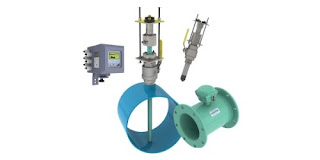 |
| Coriolis flow meters deliver a mass flow measurement Image courtesy Yokogawa |
Industrial flow meters employ differing technologies to directly or indirectly measure gas and liquid flow rates. The selection of an appropriate measurement technology and instrument will be influenced by a number of factors related to the installation and application demands.
Among the many available technologies for fluid flow measurement, vortex flow meters, magnetic flow meters, Coriolis flow meters, and rotameters are among some of the most common found in industry.
Each of the separate technologies have attributes which can make them more suitable to certain applications. Selecting the most appropriate flow measurement technology for an application is one of the initial and crucial steps to designing a well functioning flow measurement system.
Selection criteria, such as fluid temperature, pressure, and velocity will be part of the selection process. Additional considerations include whether the fluid may be abrasive, corrosive, clean or dirty. The state of the fluid, liquid or gas, must also be considered. The desired output, whether volumetric or mass flow, will certainly be an integral part of the criteria.
Selecting the right measurement technology and instrument is not always an easy task, especially since it may be something that you do infrequently. Share your flow measurement challenges and requirements with process instrumentation specialists, leveraging your own knowledge and experience with their product application expertise to save time and develop an effective solution.
Each of the separate technologies have attributes which can make them more suitable to certain applications. Selecting the most appropriate flow measurement technology for an application is one of the initial and crucial steps to designing a well functioning flow measurement system.
Selection criteria, such as fluid temperature, pressure, and velocity will be part of the selection process. Additional considerations include whether the fluid may be abrasive, corrosive, clean or dirty. The state of the fluid, liquid or gas, must also be considered. The desired output, whether volumetric or mass flow, will certainly be an integral part of the criteria.
Selecting the right measurement technology and instrument is not always an easy task, especially since it may be something that you do infrequently. Share your flow measurement challenges and requirements with process instrumentation specialists, leveraging your own knowledge and experience with their product application expertise to save time and develop an effective solution.




